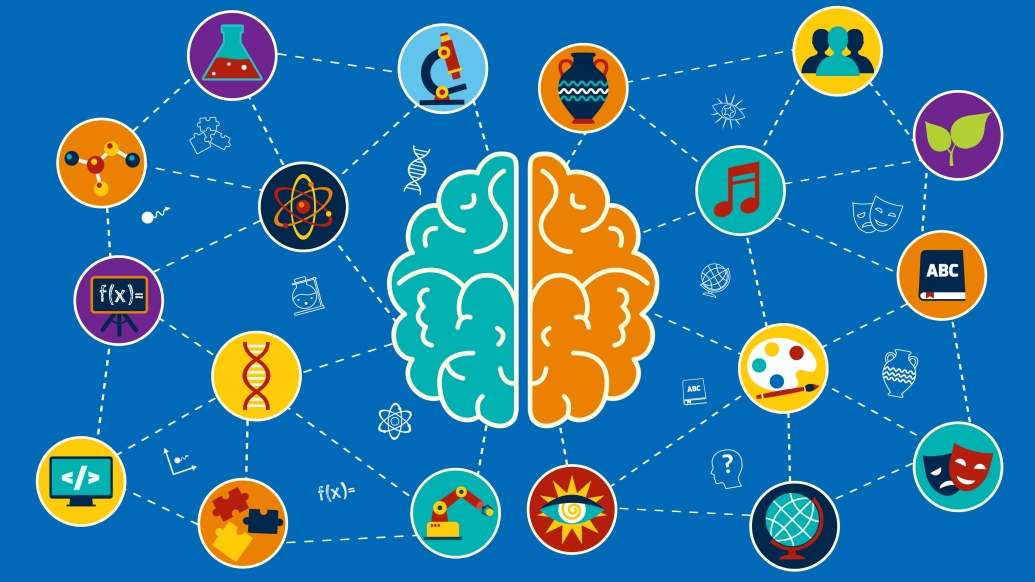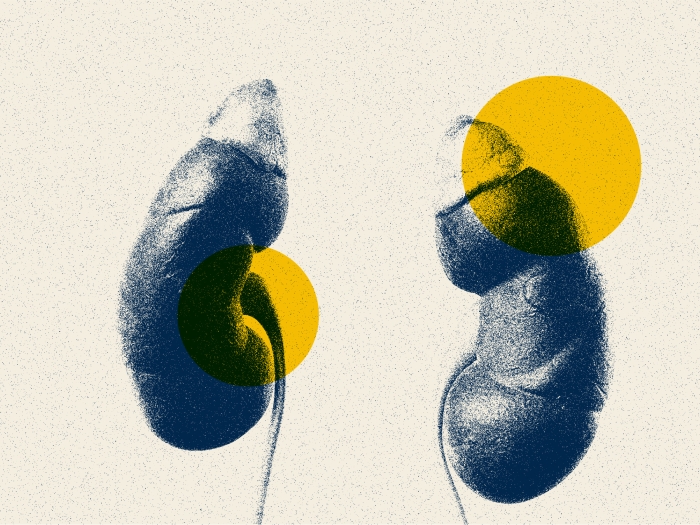A panel of neuroscientists says action is needed to drive research on brain-based disease and behavior while helping young neuroscientists prepare for careers in academia, industry and beyond.
8:00 AM
Author |

Call them the Brain Generation — the tens of thousands of college and graduate students working toward degrees in neuroscience, and the high school students who want to join them someday.
They've grown up in a time when exciting discoveries about the brain come out every day, fueled by a revolution in scientific tools over their lifetimes. And that has fueled a boom in students choosing to work toward a neuroscience degree.
But even as they study and train, they're worried about their futures, and whether they'll get to use their brains to the fullest in a time of tight research funding.
Top senior neuroscientists are concerned, too. That's why a team of them just published recommendations for how neuroscience education must change. This, they say, will keep the discoveries coming while preparing these bright young people for many paths — not just the traditional university research career.
Writing in Neuron, they present key insights and recommendations that grew out of a fall 2014 workshop held by the Forum on Neuroscience and Nervous System Disorders of the National Academies of Sciences, Engineering, and Medicine.
"This should be the best of times for both the scientists and the field," they write. "The shared task of all the stakeholders — academia, government, industry, scientific societies, foundations and other components of the private and public sectors — is to ensure that we do not kill this hope."
Huda Akil, Ph.D., a University of Michigan Medical School neuroscientist and the paper's corresponding author, reflects on the incredible growth in the field over the past two decades and sees reason for hope, not pessimism, for the new generation.
But, she says, it's up to university programs to adapt to the new reality that more than half their graduates will someday work outside academia, and train them appropriately.
"The number of opportunities is huge, within and outside academic institutions," she says. "This is a perfect moment for neuroscience in particular, when the field is blossoming and growing with many ideas, tools, approaches and intersections with other fields, and huge interest among young people. It's a perfect recipe for success. The question is how to proceed so we don't squash that opportunity."
We need to be giving out hopeful signals that it's not a horrible risk to get a Ph.D. in neuroscience and that you can make discoveries about the brain and apply them in many ways.Huda Akil, Ph.D.
Changes in order
Akil and her co-authors, who come from industry, government, universities and a private foundation, identify some key calls to action, including:
-
Incorporating more computational science, statistics and programming into neuroscience training to help students handle the massive amounts of data generated by modern tools, including brain imaging, genetic sequencing, molecular analysis and bioinformatics
-
Promoting skills that can help students communicate with and work in teams with researchers from other fields, including genetics, math, physics and engineering; the social sciences and philosophy; or even other subfields of neuroscience
-
Informing students about the range of careers available, and the challenges and opportunities involved in each, through courses and internships — while keeping the path to academic research careers strong
-
Developing two types of training programs — one to prepare traditional neuroscientists who will focus on making basic discoveries about the brain and its disorders, and one for those who will go into a more applied field in industry, nonprofit, policy and other areas — to ensure they get a solid background in neuroscience
-
Improving the representation of women and diverse groups in neuroscience careers, and supporting the personal trajectories of all students, especially in academia, where women are underrepresented on the faculty despite making up the majority of graduate students
-
Finding new ways for universities to fund graduate training in the biosciences, beyond federal grants, and assisting young scientists in finding private funds to offset the declining supply of federal research dollars
Creating a career path of "staff scientists" in American universities, who can work on the teams of traditional neuroscience professors without having to climb the traditional academic ladder
Overcoming pessimism
Promising scientists may be dropping out of the academic career path, the authors write, because of the stagnation in federal research funding, and the perception that the path to academic success and funding has become nearly impossible to climb.
They point to positive efforts made by U.S. federal research funding agencies to provide innovative funding for training. But they say universities and other sectors must also change, at a time when many nations have launched massive neuroscience efforts such as the U.S. Brain Research through Advancing Innovative Neurotechnologies (BRAIN) Initiative; China Brain; the Japan Brain/MINDS Project; and the Human Brain Project in Europe.
"We need to be giving out hopeful signals that it's not a horrible risk to get a Ph.D. in neuroscience, and that you can make discoveries about the brain and apply them in many ways," says Akil, a past president of the Society for Neuroscience and co-director of U-M's Molecular and Behavioral Neuroscience Institute. She holds the Gardner Quarton Distinguished University Professorship of Neurosciences and is a member of the medical school's Department of Psychiatry faculty.
Akil especially points to the growing role for neuroscience-trained professionals in the technology sector — not just the traditional biotechnology and pharmaceutical path, but also high-tech computing-based companies that want to use new knowledge about behavior in apps and gadgets.
"The more people in society want to understand their own behavior, control their behavior such as eating and exercise, improve their memories and attention and more, the more we can apply what we're learning in neuroscience about brain function and how it changes with various conditions or natural aging," she says.
"We have a lot to figure out going forward, and we need all hands on deck. Anyone smart enough, passionate enough and willing to be flexible and bring ideas together, we need them to stay with us."
Want to weigh in? Join the authors in a conversation about neuroscience careers in a Reddit AMA from 1 to 3 p.m. EST June 10. To learn more and register, click here.

Explore a variety of healthcare news & stories by visiting the Health Lab home page for more articles.

Department of Communication at Michigan Medicine
Want top health & research news weekly? Sign up for Health Lab’s newsletters today!





